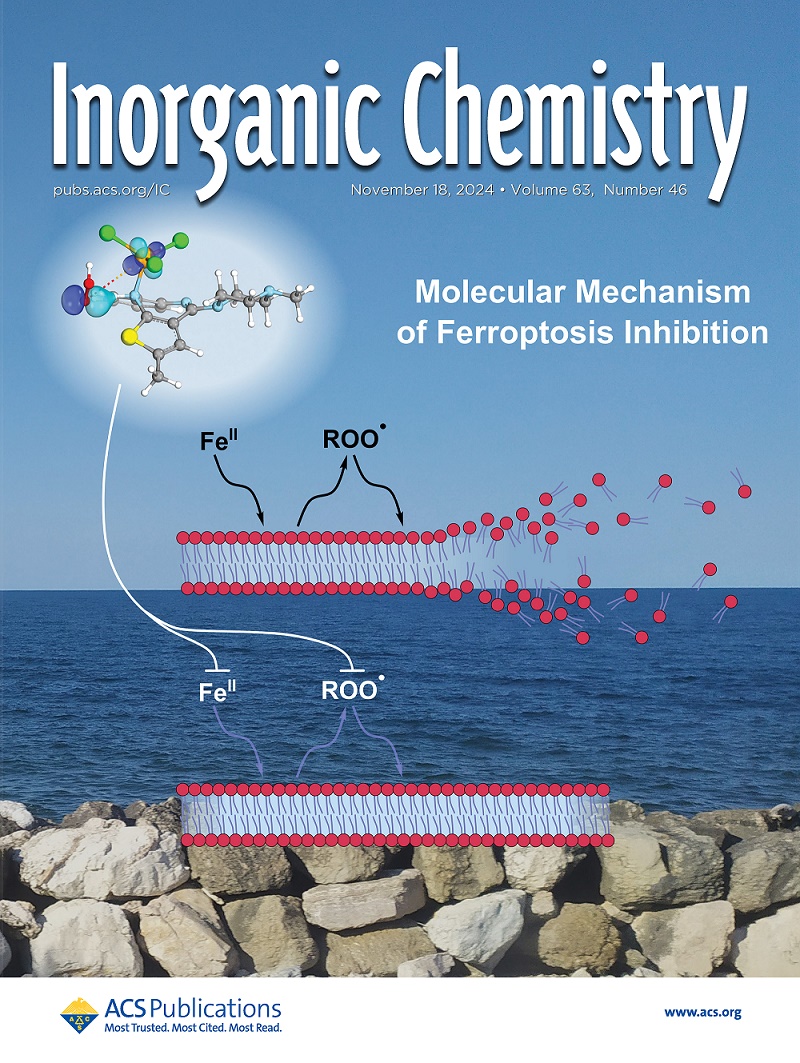Synthesis and Characterization of Co Complexes Coordinated by a Tetraanionic Bis(amidateanilido) Ligand
IF 4.3
2区 化学
Q1 CHEMISTRY, INORGANIC & NUCLEAR
引用次数: 0
Abstract
The synthesis and characterization of a square planar CoII complex coordinated by the tetraanionic bis(amidateanilido) L4– ligand, 12–, and its corresponding one-electron oxidized forms 2–, 3, and 4+ are discussed herein. 12– undergoes aerobic oxidation to form 2–, a square planar S = 1 CoIII complex. This aerobic reactivity is attributed to a remarkably negative CoII/CoIII potential, as observed in its cyclic voltammogram, which is among the most negative CoII/CoIII couples reported. This supports the conclusion that the L4– ligation is strongly stabilizing to the oxidized CoIII center. The cyclic voltammogram of 2– also reveals that further oxidations are possible at mild potentials. Indeed, the stoichiometric addition of a suitable chemical oxidant yields a ligand-oxidized S = 1/2 CoIII complex, 3, while the addition of a further equivalent of the oxidant putatively yields 4+. The formation of the ligand oxidized species 3 suggests that bis(amidateanilido) ligation can further behave as a redox-active ligand upon additional oxidation.

四阴离子双(氨基苯胺)配体配合物的合成与表征
本文讨论了四阴离子双(氨基苯胺)L4 -配体12 -及其相应的单电子氧化形式2 -、3和4+的方形平面CoII配合物的合成和表征。12 -经过好氧氧化形成2 -,一个方形平面S = 1 CoIII配合物。这种有氧反应性归因于一个显著负的CoII/CoIII电位,正如在其循环伏安图中观察到的,这是报道过的最负的CoII/CoIII对之一。这支持了L4 -连接对氧化的CoIII中心有很强的稳定作用的结论。2 -的循环伏安图也表明,在温和电位下,进一步氧化是可能的。事实上,适当的化学氧化剂的化学计量添加得到配体氧化的S = 1/2 CoIII络合物,3,而另一等价物的氧化剂的添加推定得到4+。配体氧化态3的形成表明其(氨基苯胺)连接在进一步氧化时可以进一步表现为氧化活性配体。
本文章由计算机程序翻译,如有差异,请以英文原文为准。
求助全文
约1分钟内获得全文
求助全文
来源期刊

Inorganic Chemistry
化学-无机化学与核化学
CiteScore
7.60
自引率
13.00%
发文量
1960
审稿时长
1.9 months
期刊介绍:
Inorganic Chemistry publishes fundamental studies in all phases of inorganic chemistry. Coverage includes experimental and theoretical reports on quantitative studies of structure and thermodynamics, kinetics, mechanisms of inorganic reactions, bioinorganic chemistry, and relevant aspects of organometallic chemistry, solid-state phenomena, and chemical bonding theory. Emphasis is placed on the synthesis, structure, thermodynamics, reactivity, spectroscopy, and bonding properties of significant new and known compounds.
 求助内容:
求助内容: 应助结果提醒方式:
应助结果提醒方式:


